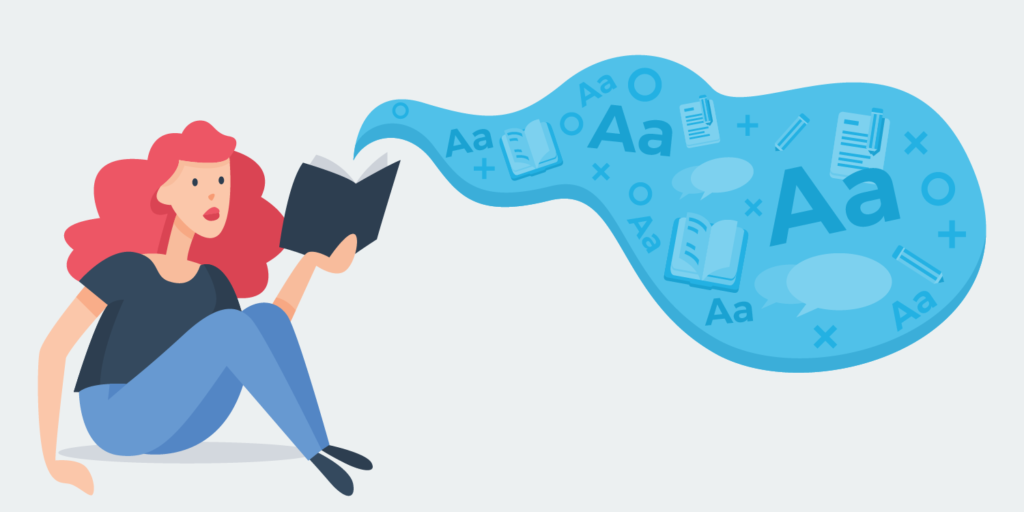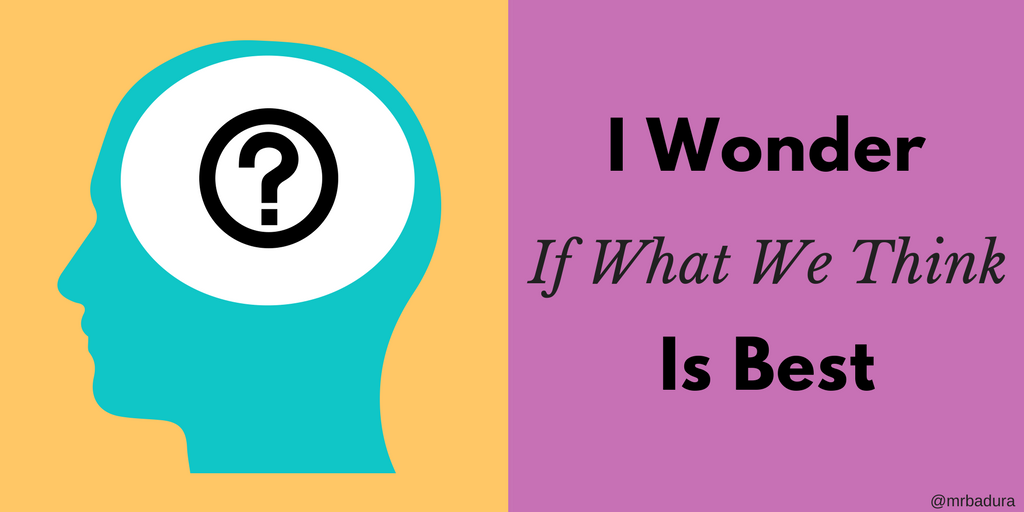Wonder là từ vựng có nhiều chức năng nên tùy theo mỗi chức năng mà Wonder có ý nghĩa và cách dùng khác nhau. Vì vậy ieltscaptoc.com.vn đã tổng hợp cách sử dụng và phân biệt cấu trúc wonder trong bài viết dưới đây để mọi người cùng học tập.
Nội dung chính
1. Wonder là gì?
Wonder là một từ vựng tiếng Anh thông dụng tồn tại ở hai dạng thức danh từ và động từ.

Dưới đây là 2 cách định nghĩa theo từ điển Anh Mỹ và từ điển Anh Anh.
1.1. Định nghĩa theo từ điển Anh Mỹ
Ở dạng động từ
- Wonder: to think about things in a questioning and sometimes doubting way
(suy nghĩ về mọi thứ theo cách nghi ngờ và hơi nghi ngờ)
Example: Don’t you ever wonder if she’s happy?
(Bạn có bao giờ tự hỏi liệu cô ấy có hạnh phúc không?)
Ở dạng danh từ
- Wonder – a feeling of great surprise and admiration, or someone or something that causes such feelings
(một cảm giác vô cùng ngạc nhiên và ngưỡng mộ, hoặc ai đó hoặc thứ gì đó gây ra cảm giác như vậy)
Example 1: People simply stared at her in wonder.
(Mọi người chỉ đơn giản nhìn cô chằm chằm)
Example 2: If you didn’t study, no wonder you failed the the test
(Nếu bạn không học thì việc bạn trật kỳ thi là không có gì ngạc nhiên)
1.2. Định nghĩa theo từ điển Anh Anh
- Wonder is a feeling of great surprise and admiration caused by seeing or experiencing something that is strange and new
(một cảm giác vô cùng ngạc nhiên và ngưỡng mộ khi nhìn thấy hoặc trải nghiệm điều gì đó kỳ lạ và mới mẻ)
Example: The boys gazed in wonder at the shiny red Ferrari
(Các chàng trai nhìn chằm chằm vào chiếc Ferrari màu đỏ sáng bóng)
- Wonder is an object that causes a feeling of great surprise and admiration
(một đối tượng gây ra cảm giác ngạc nhiên và ngưỡng mộ lớn)
Example: With all the wonders of modern technology, why has no one come up with a way to make aircraft quieter?
(Với tất cả những điều kỳ diệu của công nghệ hiện đại, tại sao không có ai nghĩ ra cách làm cho máy bay yên tĩnh hơn?)
- Wonder is an extremely useful or skilful person
(một người cực kỳ tài giỏi hoặc khéo léo)
Example: Our new babysitter’s a wonder – she’ll come at very short notice and the kids love her
(Người giữ trẻ mới của chúng tôi là một thiên tài – cô ấy dỗ những đứa trẻ rất nhanh và những đứa trẻ yêu cô ấy)
2. Cấu trúc Wonder
Xem thêm bài viết liên quan:
- Cấu trúc WHEN và WHILE trong tiếng Anh – Phân biệt cách dùng
- Cấu trúc Whether, Whether or – Phân biệt & cách dùng trong tiếng Anh
- Cấu trúc Not until, Only when – Cách dùng chi tiết có bài tập

Dưới đây là những cấu trúc của Wonder
I wonder if + Subject / Verb
- Dùng để thể hiện dự đoán điều gì đó sẽ xảy ra cho tương lai
Example 1: I wonder if it will rain tomorrow.
Tôi đoán rằng mai trời sẽ mưa
Example 2: I wonder if the train is on time.
Tôi dự đoán đoàn tàu sẽ đến đúng giờ
I wonder if + You can/ It’s possible to
- Dùng để đưa ra lời đề nghị hoặc yêu cầu một cách lịch sự
Example 1: I wonder if you can tell me where the station is.
Tôi tự hỏi nếu bạn có thể cho tôi biết nhà ga ở đâu.
Example 2: I wonder if it’s possible to send it by regular mail.
Tôi tự hỏi liệu có thể gửi nó bằng thư thông thường không.
Example 3: I wonder if we can meet on Thursday next week.
Tôi tự hỏi liệu chúng ta có thể gặp nhau vào thứ Năm tuần sau không.
I wonder + Wh- question
- Dùng để thể hiện sự thắc mắc. Cách khác để đặt câu hỏi.
Example 1: I wonder what that noise is
Tôi tự hỏi tiếng ồn đó là gì
Example 2: I wonder who opened the window
Tôi tự hỏi ai đã mở cửa sổ
Example 3: I wonder when the meeting will start.
Tôi tự hỏi khi nào cuộc họp sẽ bắt đầu
I wonder if/ whether…….
- Wonder để ở thi hiện tại đơn), dùng để yêu cầu cái gì đó một cách lịch sự. Trường hợp này thì nó bằng với cấu trúc “may i…..?”.
Example: I wonder if I might have a drink?
Tôi có thể uống một ly không?
I was wondering if/ whether…….
- Động từ chia ở quá khứ tiếp diễn, dùng để hỏi một cách lịch sự xem người ta có muốn giúp mình hay không hoặc có muốn làm gì đó hay không.
Example: I was wondering whether you could lend me your car?
Tôi đã tự hỏi liệu bạn có thể cho tôi mượn xe của bạn?
3. Các thành ngữ với Wonder trong tiếng Anh
- Wonder of wonders: A happening, an event, a pleasing circumstance, results beyond one’s wildest dream or expectation
(Một sự kiện xảy ra, một sự kiện, một hoàn cảnh làm hài lòng, kết quả vượt ra ngoài giấc mơ hay mong đợi điên rồ nhất)
- Gutless wonder: One who lacks guts or courage; a coward.
(Một người thiếu can đảm hoặc can đảm; một kẻ hèn nhát)
- One-hit wonder: A musical performer or musical group known for a single hit song, especially after failing at later attempts at success.
(Một nghệ sĩ biểu diễn âm nhạc hoặc nhóm nhạc được biết đến với một bài hát thành công, đặc biệt là sau khi thất bại ở những nỗ lực sau này thành công.)
- Nine day wonder: Something that generates interest for a limited time and is then abandoned
(Một cái gì đó tạo ra sự quan tâm trong một thời gian giới hạn và sau đó bị bỏ quên).
- Small wonder: An event or fact whose cause or rationale is not difficult to discern
(Một sự kiện hoặc thực tế có nguyên nhân hoặc lý do không khó để nhận ra)
- Do wonders(for somebody/something):
(Có tác dụng lớn/kì diệu.)
- It’s a wonder (that) more people weren’t hurt.
(Điều kì lạ là mọi người không bị thương.)
4. Bài tập
Để vận dụng những cấu trúc vừa được đưa ra ở trên. Ieltscaptoc.com.vn đã tổng hợp những bài tập để bạn ôn luyện.

Dưới đây là bài tập có kèm đáp án để các bạn kiểm tra kết quả của mình.
Bài tập ứng dụng
Bài tập 1
Chọn đáp án có chứa lỗi sai trong các câu sau
1. I wonder if you can help me. I want to get in touch with the woman which we met at the meeting last week. Do you know the one I mean.
A. If B. touch C. which D. one
2. I’m sending this email to ask for more information about the language courses which I saw them advertised in The Daily Star yesterday.
A. More B. courses C. them D. yesterday
3. How are you getting on with your new job?; I’m finding my new job exhausting, that is not surprising considering I have to travel so much.
A. On B. Job C. surprising D. So
4. I really enjoyed the lecture which you gave it on Wednesday, and am thinking about doing my assignment on the same topic.
A. Enjoyed B. It C. Doing D. same
5. You left your notebook at my house. Do you need it? It’s the one which you have written your lecture notes on.
A. Left B. My C. Written D. On
6. I’m just emailing you to find out if you want to go to the cinema on Thursday. I’ve got today’s newspaper, when has a list of films. If you’re free, let me know.
A. Out B. On C. When D. let
7. Can you pick up some shopping on your way home? I want some of those bread rolls what we had last week. Will you be able to stop at the shop?
A. Up B. Those C. What D. able
8. You are clearly a person who life is full and busy and that is why we think you would like our Ladies Personal Organizer. For just £15.99 you .
A. Clearly B. Who C. That D. like
Bài tập 2
Chia động từ trong ngoặc để tạo thành câu có nghĩa
The first diagram (1-illustrate)____________the process of cement manufacture, and the second diagram (2-show)_____________ the materials that go into the production of concrete.
It is clear that there are five stages in the production of cement, beginning with the input of raw materials and ending with bags of the finished product. To produce concrete, four different materials (3-mix)______________ together.
At the first stage in the production of cement, limestone and clay (4-crush)____________ to form a powder. This powder then (5-mix)______________ before it passes into a rotating heater. After heating, the resulting mixture (6-grind)_______________, and cement (7-produce)______________. Finally, the cement (8-package)_______________in large bags.
Cement is one of the four raw materials that (9-use)_______________ in the production of concrete, along with gravel, sand and water. To be exact, concrete (10-consist)_______________ of 50% gravel, 25% sand, 15% cement and 10% water. All four materials are blended together in a rotating machine called a concrete mixer.
Đáp án
Đáp án bài 1
- C
- C
- C
- B
- D
- C
- C
- B
Đáp án bài 2
- illustrates
- shows
- are mixed
- are crushed
- is then mixed
- is ground
- is produced
- is packaged
- are used
- consists
Bài viết của ieltscaptoc.com.vn đã cung cấp đầy đủ cho bạn những cấu trúc của Wonder và kèm thêm bài tập để bạn ôn luyện. Chúc bạn học tập thật tốt!

